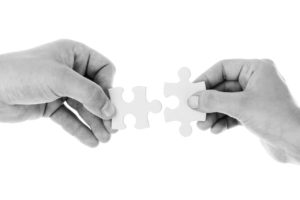 If you’re currently tuning in to this acupuncture and holistic wellness blog, you probably already know that more and more people are seeking treatment for a wide range of symptoms and conditions outside the care of their primary care physician. These specialized treatments, including acupuncture and herbal medicine, fall under the umbrella of “Complementary and Alternative Medicine,” or CAM. While these terms are often used interchangeably for any treatment outside the realm of biomedicine, I have a strong preference for one term over the other, and I’ll tell you why.
If you’re currently tuning in to this acupuncture and holistic wellness blog, you probably already know that more and more people are seeking treatment for a wide range of symptoms and conditions outside the care of their primary care physician. These specialized treatments, including acupuncture and herbal medicine, fall under the umbrella of “Complementary and Alternative Medicine,” or CAM. While these terms are often used interchangeably for any treatment outside the realm of biomedicine, I have a strong preference for one term over the other, and I’ll tell you why.
We are living in a time where people are able to design (with the help of their team) a system of different types of treatment that not only provide symptom relief, but can also get to the root of the problem and prevent further health issues from developing. This integrated system of treatments can look different for each person, depending on the condition and how it manifests in that person’s body. This type of individualized, patient-centered care is what we pride ourselves on here and Pivot and in the greater Traditional Chinese Medicine (TCM) community, but we can’t do it alone (nor should we). We work alongside biomedical doctors, massage therapists, chiropractors, physical therapist, psychologists, and so many more healthcare professionals who are dedicated to positive outcomes for their patients. To try and exist as an “alternative” to these other health forms would be a disservice to the people we’re treating and in some cases could be dangerous. There is so much to be gained by looking at the same problem through different lenses, or by combining talents of various healthcare providers to treat different facets of the same problem. That’s why I prefer the terms “complementary” and “integrated” healthcare.
We find in our practice that many people come in with the impression that they need to choose between treatment with acupuncture or treatment with massage, chiropractic or physical therapy (to name just a few). Traditionally acupuncture has been used in combination with other treatment modalities. The five branches of TCM include Tui Na (bodywork), dietary therapy, herbal medicine, qi gong (an exercise combining movement with breath), and acupuncture. Different combinations are used as needed to treat different patient’s needs. Today, with western biomedicine, we are so fortunate to have even more options for the types of care we seek. Practitioners from different backgrounds are able to work together to help patients find the approach that works for them, and it’s an exciting time to be working in complementary medicine.